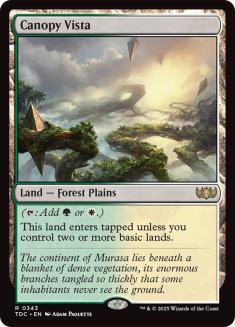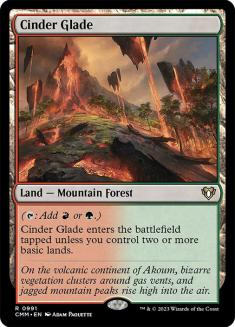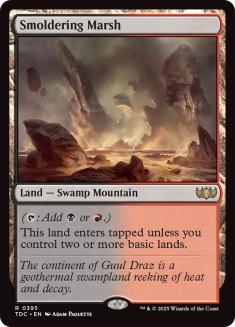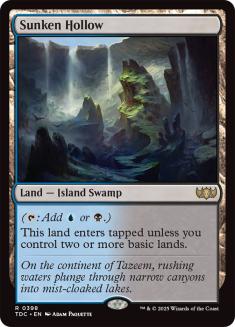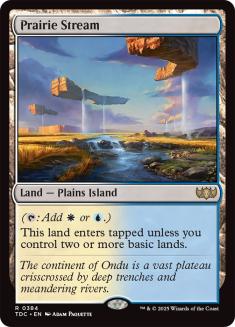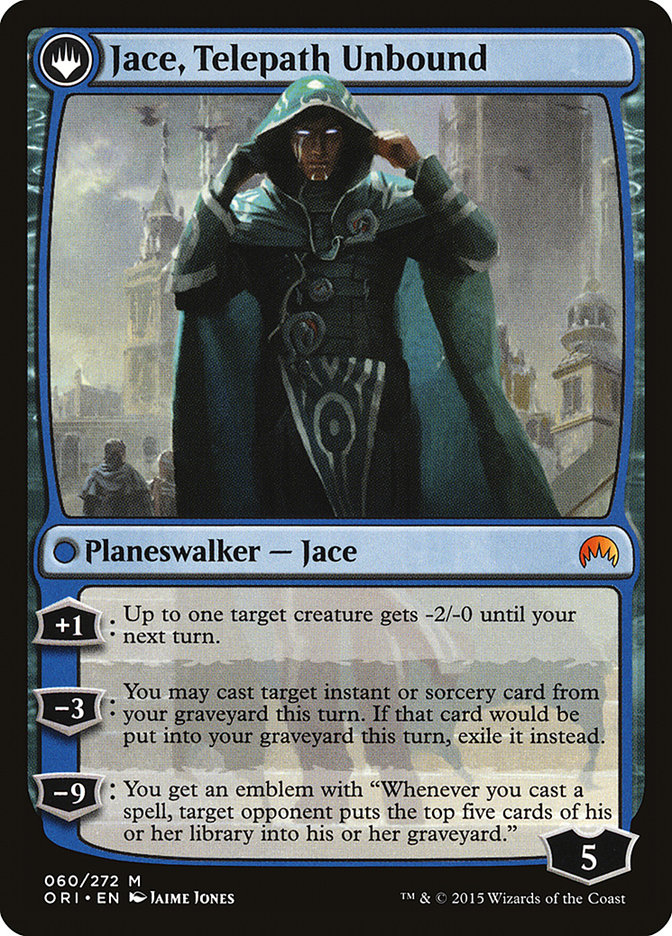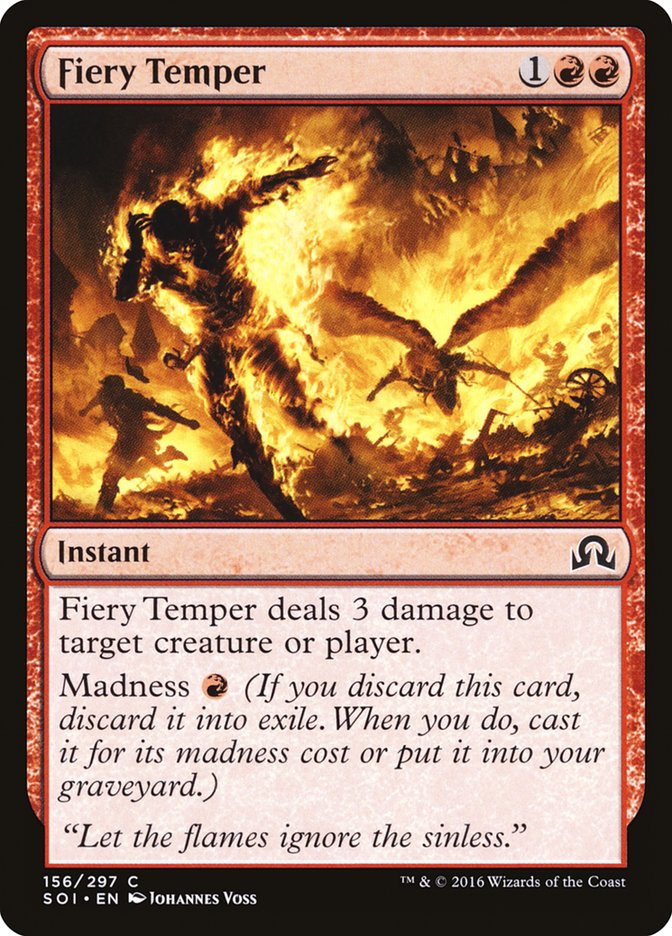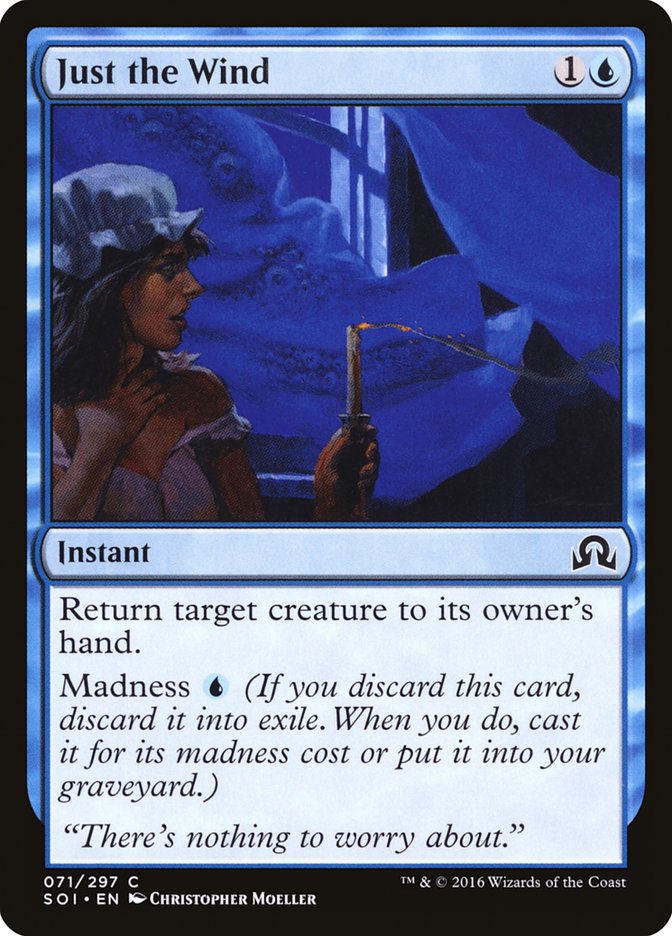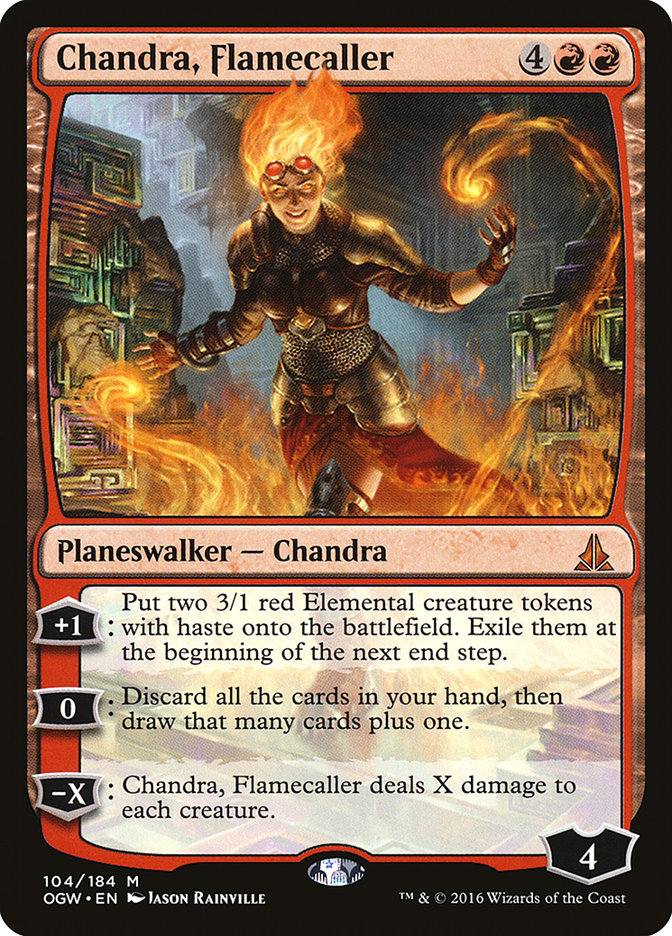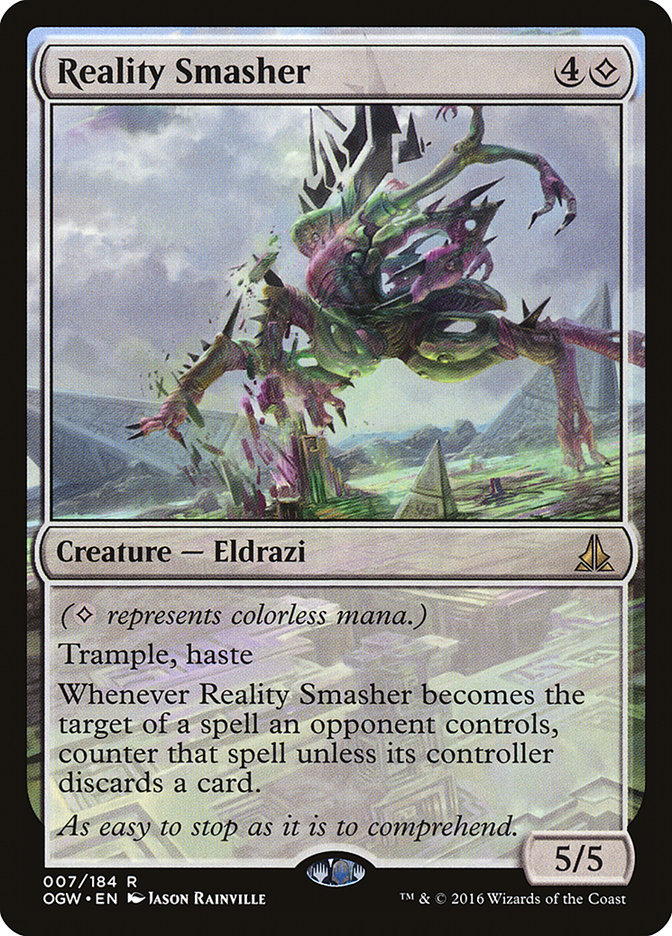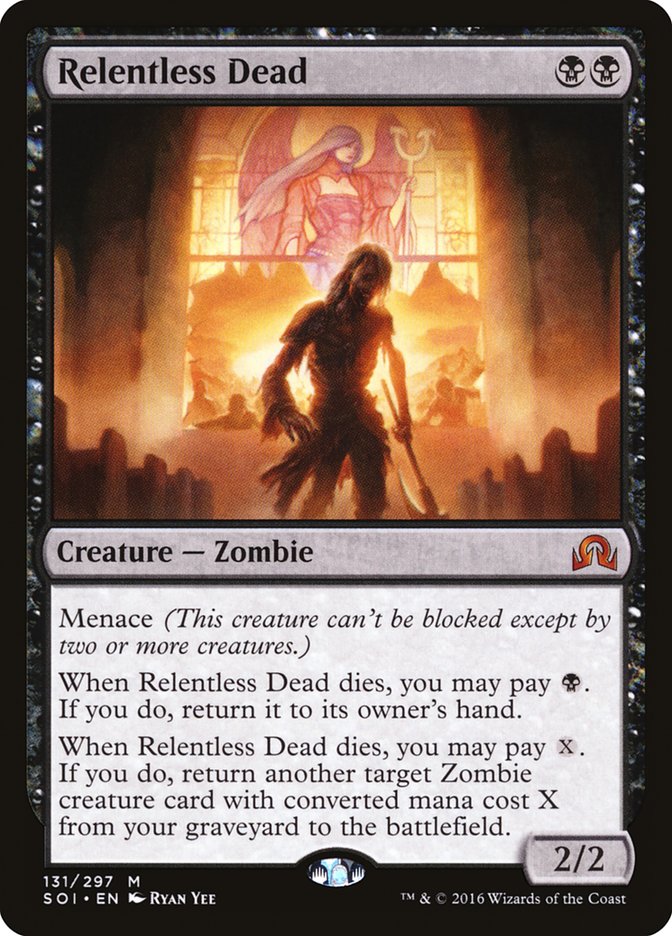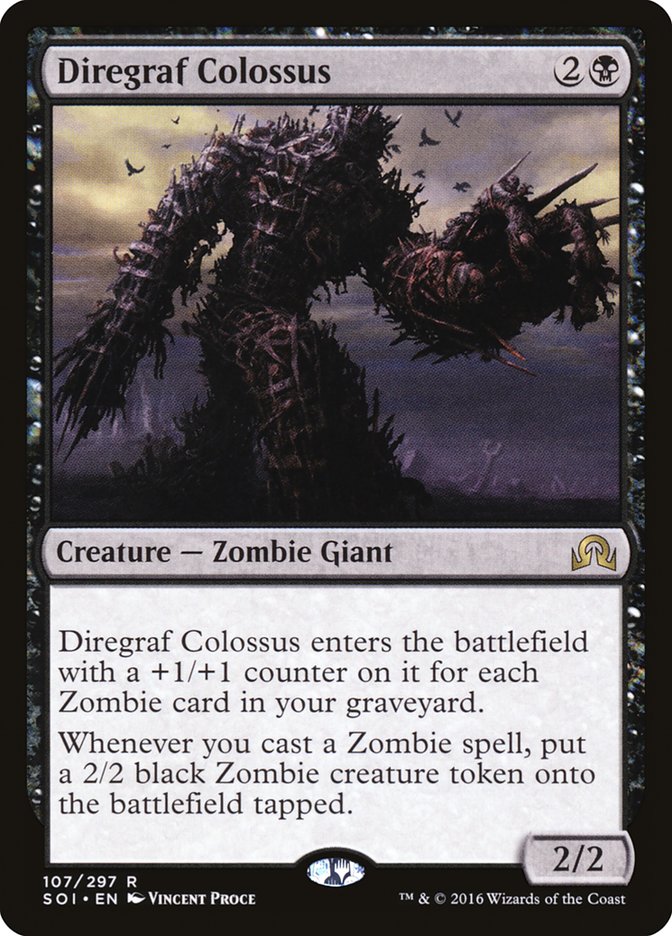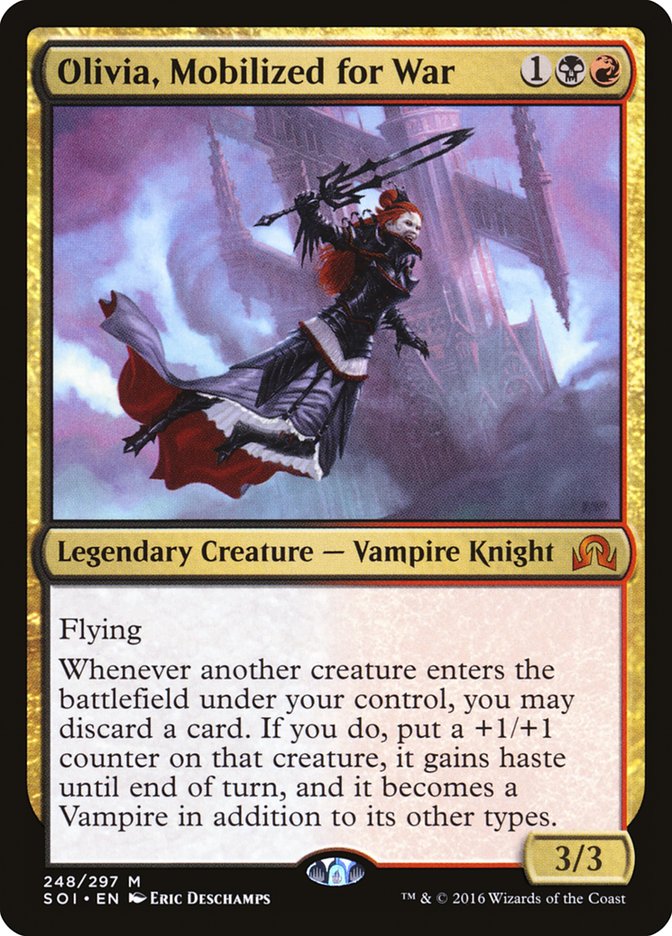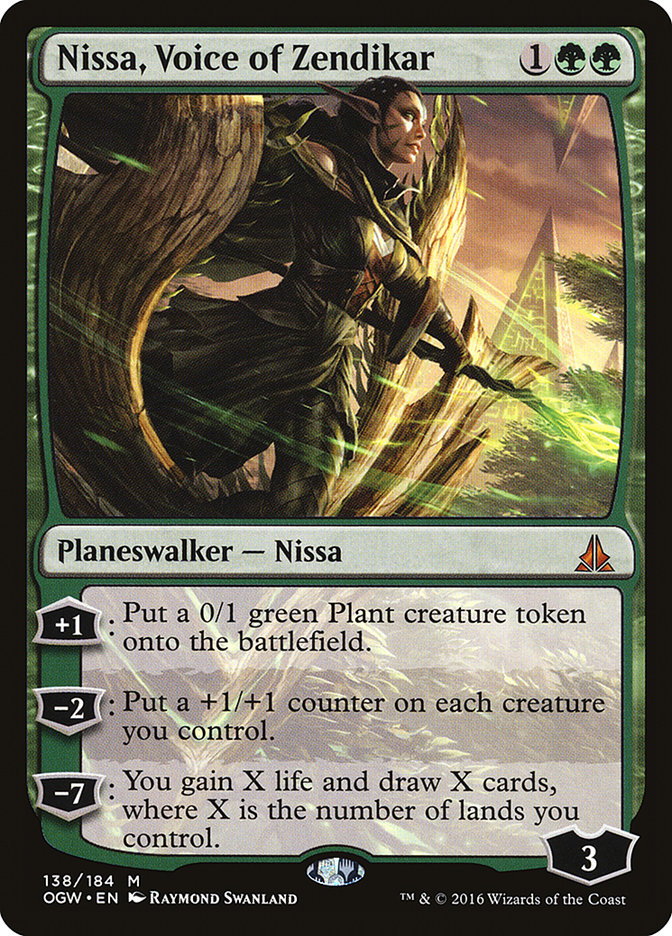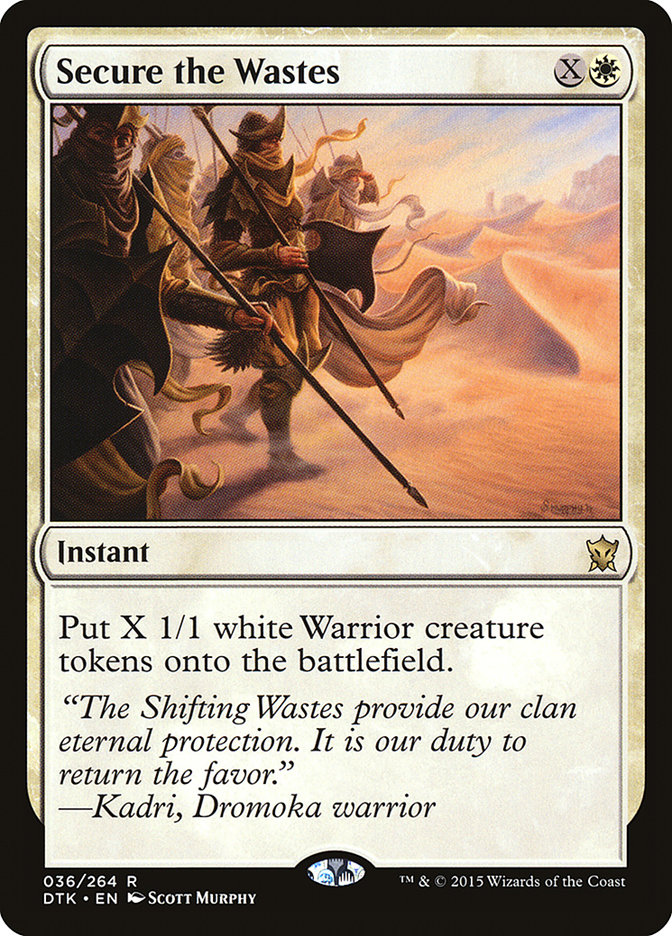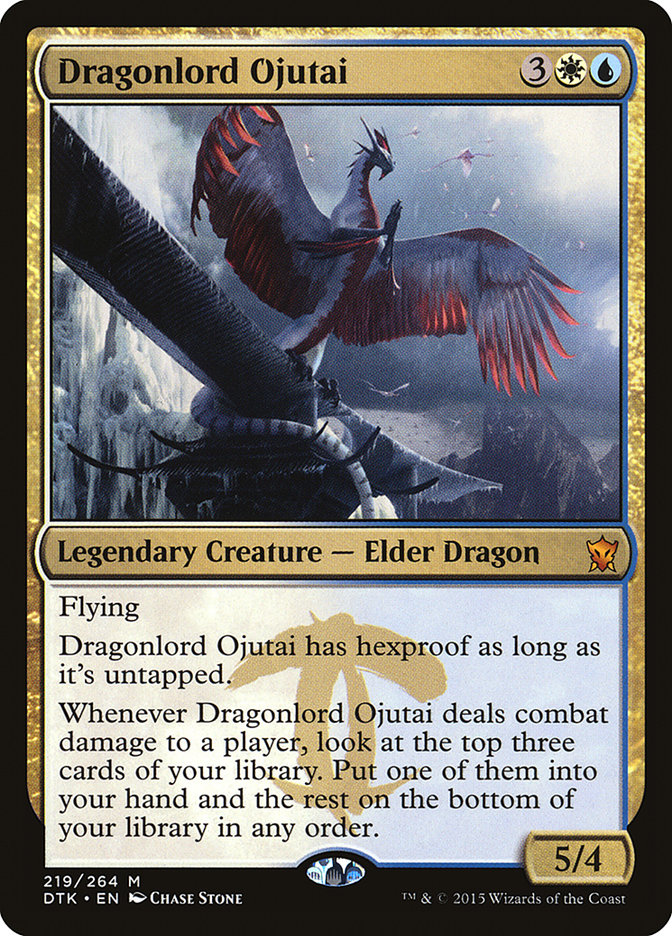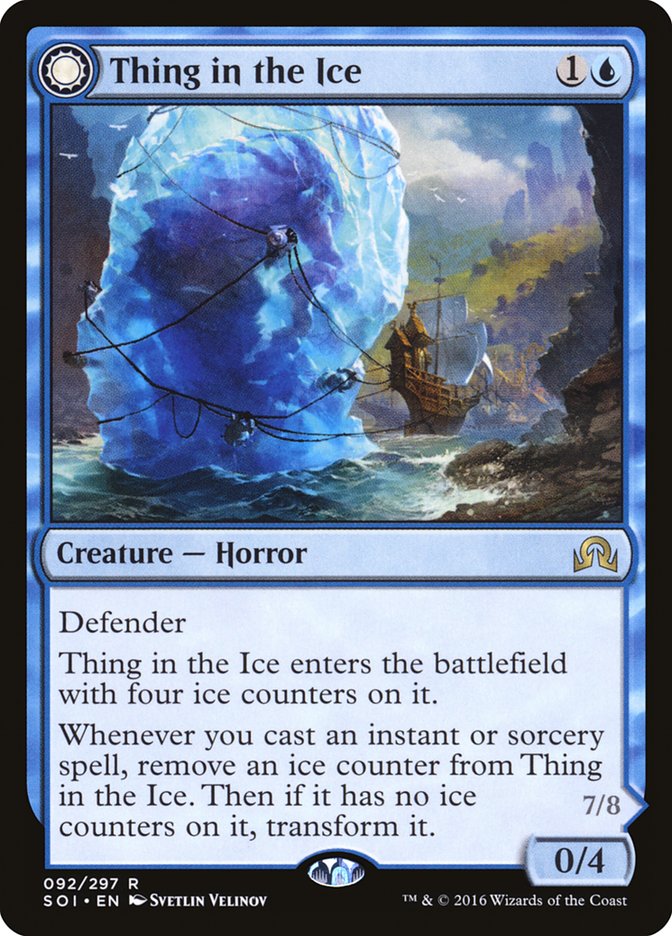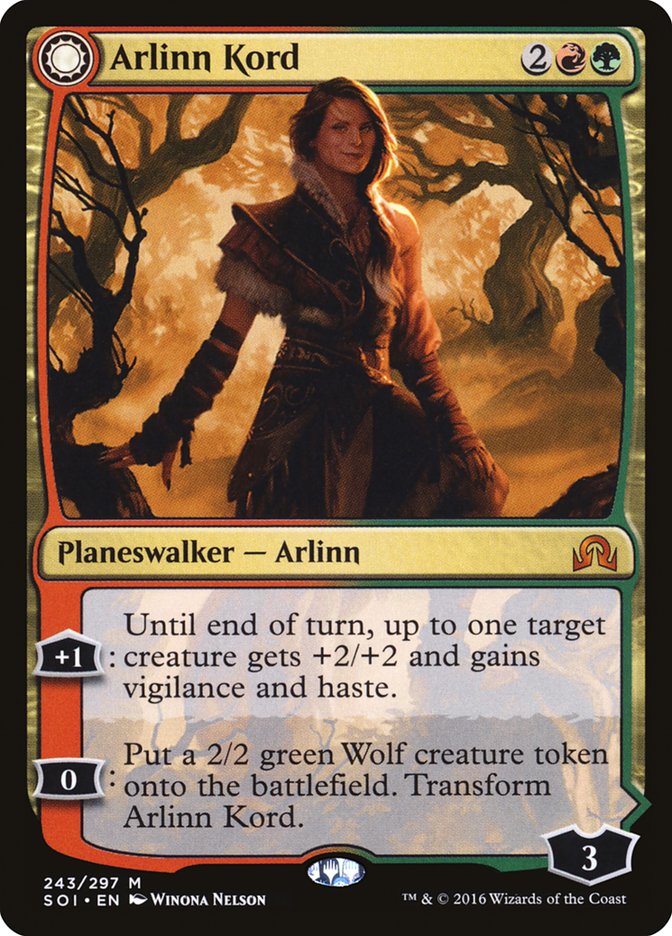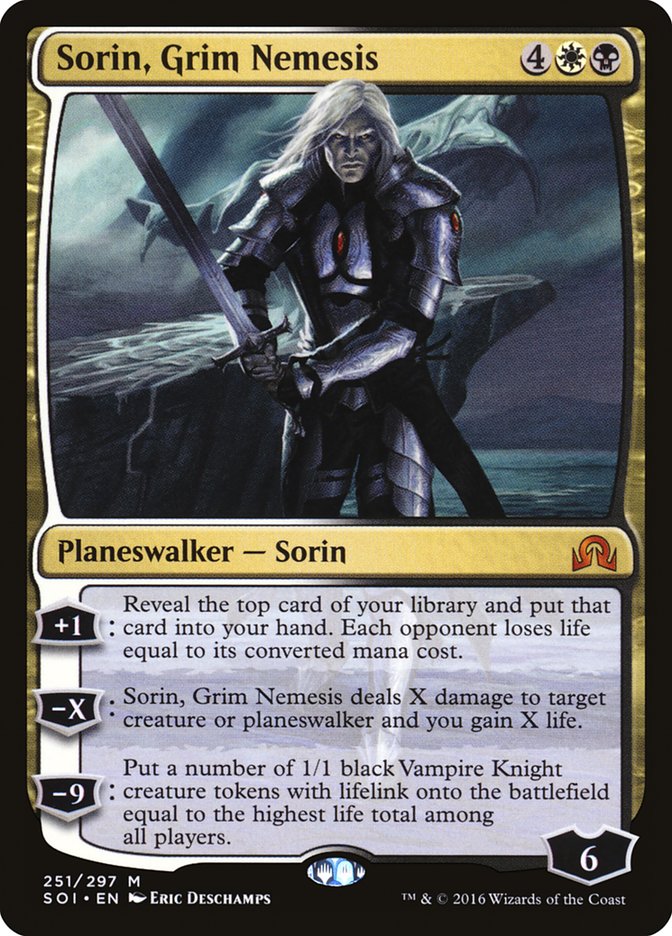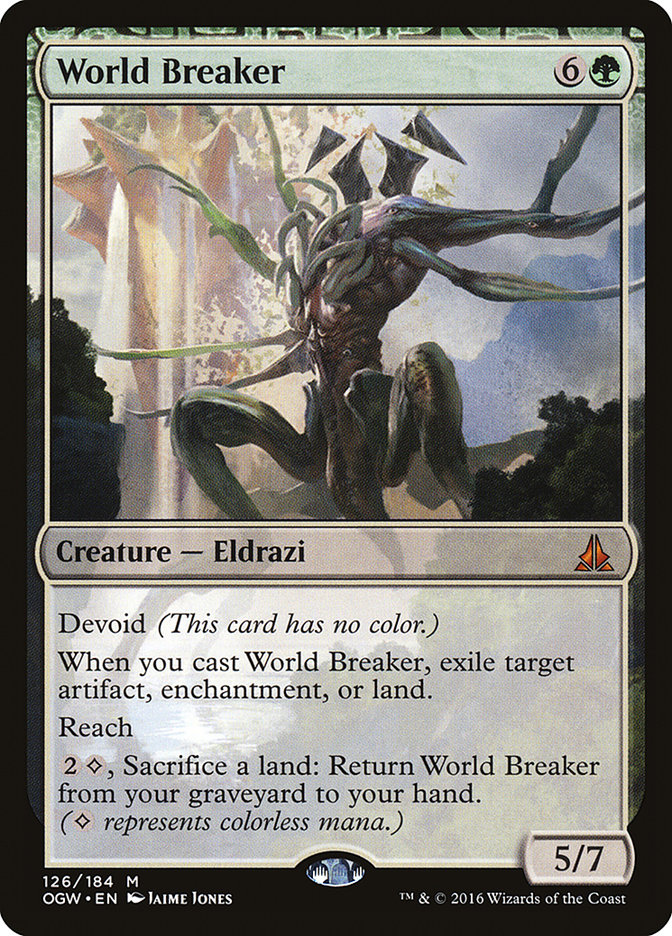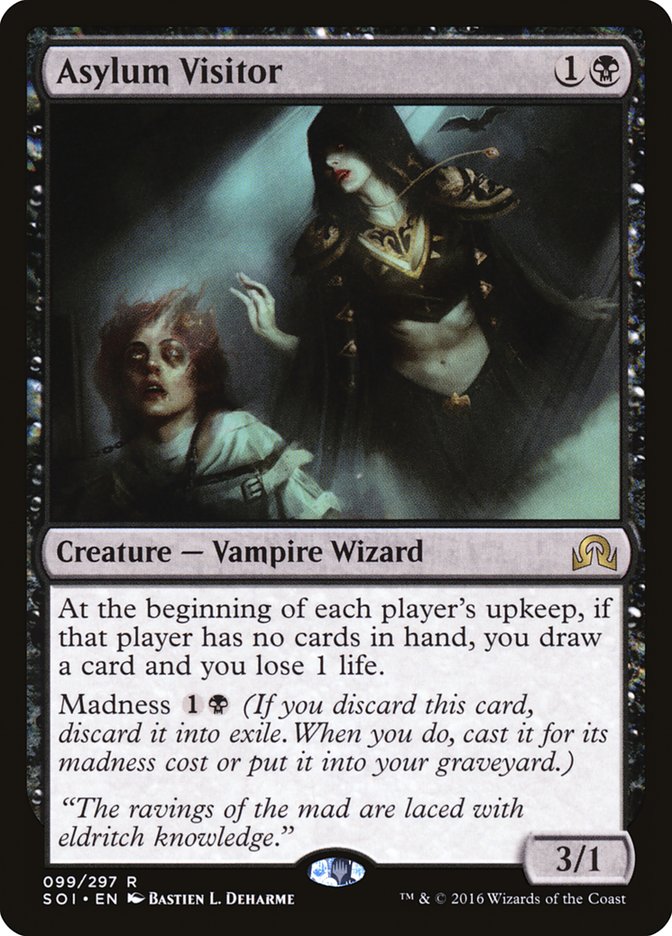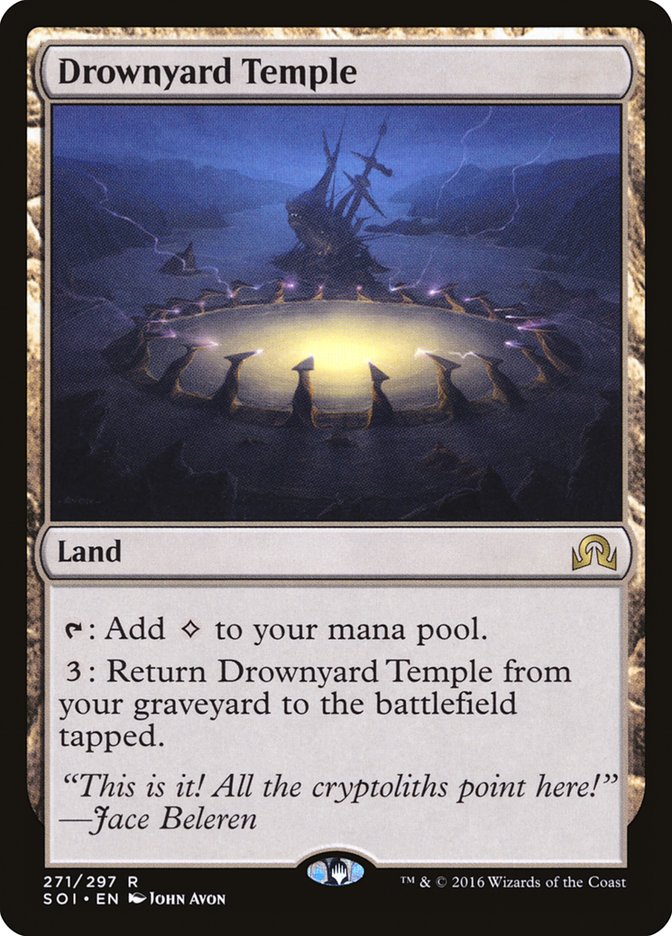Oath of the Gatewatch Standard is in the books. I myself enjoyed the format and thought that the fetchland-Battle land manabases encouraged a great deal of room for exploring archetypes and the options available to them. Despite Four-Color Rally perhaps being the “best” deck, it was still complicated and encouraged interesting games without taking an overwhelming majority of the metagame share.
That being said, I do think that if Standard were not what it is, than inevitably more players would have picked up Rally and the format might have become more exhausting. Further, the incredible amount of shuffling is certainly something I can do without. I don’t take the stance that having unbelievably good mana in a vacuum is bad for a short while, but when optimal strategic decisions are boiling down to “just make a play as long as you do it quickly,” then there are some underlying issues with the format.
In short, I’m a little sad to see this format go, as I enjoyed it thoroughly and got to personally explore and play a wide variety of archetypes, but it’s time to get into Shadows over Innistrad!
We’ve finally hit the sweet spot in spoiler season where we have a lot to digest and can begin to start brewing heavily. I’m super-excited as our return to Innistrad is oozing with flavor and a lot of the cards and synergies are operating on subtle synergy rather than in-your-face power. Of course, there’s also Archangel Avacyn.
Before we get to her, though, I think it’s important to address how to begin tackling this Standard format. While it might be more fun to just start building decks with new cards, with such a dramatic shift in the dynamics of the format, it’s best to start with what major players the rotation left behind.
The Mana
Fetchlands are gone. This ultimately means that Battle lands are suddenly incredibly fair. However, the new Shadow lands were also spoiled that interact favorably with Battle lands. I find this all rather interesting.
Manabases are going to be much worse and there is a potential for decks to play off-curve more often while also having between three and five more life a game, which should, in theory, elongate games of Magic. Personally, I’m a fan of this in addition to the lack of shuffling.
I won’t say that fetch-Battle manabases were simple by any means; in fact, they were incredibly complex, but they were also mostly solved by the conclusion of the format. Furthermore, they basically pushed out playing any of the utility lands that are currently available.
This will be the major tension in the format as far as building manabases go. Allied two-color decks suddenly have incredibly reasonable manabases with the opportunity to go in a wide variety of directions with colorless lands to compliment them.
Three-color decks are going to be tricky to build. They have the opportunity to play both creature lands and pain lands, but those will come at a real cost for balancing Shadow and Battle lands for playing on-curve. Evolving Wilds looks to be the premier choice for enabling all of these while also serving, critically, as an easy means to put a land in the graveyard for Delirium. On top of all this, we have the presence of Eldrazi and their desire for “Wastes” mana. Westvale Abbey even looks to be one of the best cards in the set.
Just because things are changing doesn’t mean they got more simplistic. This iteration of Standard mana is just another puzzle to solve.
The Threats
Let’s just go ahead and get this out of the way. Jace, Vryn’s Prodigy is still going to be the individually best card in the format, barring something incredibly strange happening. However, a lot of the context of Jace will be different. As we just spoke about, the mana of the format will prohibit Jace from seeing play in every single deck that wants him.
I expect to be one of the people who will aggressively push to incorporate him into three-color decks, but that doesn’t mean that there won’t be a great cost associated with playing JVP in a non-traditional blue/x deck.
Madness is going to be Jace’s best friend. As of this writing, the two major interactive spells to abuse Jace are Fiery Temper and Just the Wind. Neither are slouches, and there are also a host of other, more aggressive madness cards that will work well paired with the powerful planeswalker.
To this end, it’s important to note that Jace probably won’t be flipping as aggressively as he does now. Not only is this a side effect of the lack of fetch lands, but a card with madness discarded to Jace enters the exile zone instead of the graveyard, which can be either a boon or a drawback depending on the situation. This is a critical interaction to keep in mind.
Two other major points in terms of Jace’s place in the format are the rotation of delve cards and the shrinkage of available removal. The former is fairly obvious, but I’m willing to bet that the latter is something that a lot of folks haven’t considered. Most decks will only be able to pair Jace with one additional color. Red and black still look fairly attractive as far as removal options, but even then we are basically split into conditional spells that are capable of handling early creatures cheaply or more diverse but expensive options. Gone are the days of being able to play Jace alongside Fiery Impulse, Crackling Doom, Utter End, and Murderous Cut!
White is the biggest point of contention, as the best removal spells are Silkwrap, Stasis Snare, and expensive sweepers. Declaration in Stone certainly looks to be an awesome addition from Shadows, but I don’t think Jace is going to be the be-all end-all in U/W control decks despite its great interaction with Ojutai’s Command.
Collected Company is the other elephant in the format. While Company may have ultimately proved to be the second-best card in the format down the stretch of Oath Standard, it’s not clear to me whether it will retain that title.
Again, it is important to note the limitations on the mana. Collected Company is absolutely incredible when it can be paired with whatever the best 27 creatures for your deck are, including Jace. When Company is restricted to two or maybe three colors and may have to eschew Jace and Reflector Mage, it’s not exactly clear the card is still where you want to be.
Further, I firmly believe that planeswalkers are due for a major resurgence in Standard. While Gideon, Ally of Zendikar may have seen a large shift out of the format as Sylvan Advocate and Reflector Mage rolled in, I don’t think every strategy will be able to play the all the most efficient 2/3s in their decks anymore.
Chandra, Flamecaller, on the other hand, is only going to see more play. Chandra may be the most individually powerful card left over from Oath Standard. Folks began to realize she wasn’t messing around, and I think she’s going to be a centerpiece for deck construction, not only by herself but making sure that one has the means to fight against her.
I also firmly believe that people who are able to construct their deck in a manner to pace themselves appropriately in Chandra wars will be at a huge advantage.
She reminds me of Goblin Rabblemaster in some respects, although amplified in an even more punishing manner. The player who was able to kill their opponent’s Rabblemaster and then untap with their own and generate a Goblin token, while eating their opponent’s next turn as they were forced to remove the Rabblemaster, was at a huge advantage.
In this case, the person that is able to play the second Chandra, Flamecaller and eat their opponent’s is almost always a massive favorite to win the game on the spot.
It’s hard to say whether this dynamic will ultimately be frustrating, as the window to answer the powerful planeswalker is so small. Regardless, Chandra is unbelievably powerful and something that we should be actively looking to incorporate into our Red Shadows shells.
The Eldrazi
More specifically, the colorless-mana-required cards headlined by Thought-Knot Seer and Reality Smasher.
I believe that these strategies are going to be particularly dominant in the early stages of Shadows Standard because the mana is fairly elementary to construct and Foundry of the Consuls and Westvale Abbey are so powerful.
Kent Ketter put up a deep run with Mono-Red Eldrazi last week at #SCGINDY, and virtually none of that deck is going to rotate!
Creatures (26)
- 3 Pia and Kiran Nalaar
- 4 Hangarback Walker
- 4 Thopter Engineer
- 4 Vile Aggregate
- 4 Reality Smasher
- 3 Thought-Knot Seer
- 4 Hedron Crawler
Planeswalkers (4)
Lands (25)
Spells (5)

This is a huge testament to the power level of these Eldrazi cards and I suspect that Week 1 is going to see a lot of folks gravitate towards the red deck, since it is also an excellent home for Chandra.
Before the full set is spoiled it’s difficult to say what is going to be the initial litmus test for Standard, but I’d be willing to bet it’s Eldrazi with the information we have now.
Some Brews
The first thing I should note is that Shadows is shaping up to be a set with a lot of synergies. What this means for the purpose of this article is that it is unlikely that all of the “payoff” cards for a variety of the decks have been spoiled, particularly at the time of this writing. In other words, I don’t want to be presenting things along the lines of strict Zombie, Vampire, and Madness decks.
While cards like Relentless Dead; Diregraf Colossus; Olivia, Mobilized for War; and various madness cards all look to be awesome and powerful options, building decks around them right now isn’t as fruitful when they are still likely to get another piece or two to improve them.
Instead I want to take a look at the design space where there are holes from the leftover Standard format, particularly some ideas I had or decks I played that weren’t powerful enough or eventually faded in strength, in addition to utilizing some stand-alone powerful cards from the new set I’m interested in.
Let’s start with Archangel Avacyn. As the marquee card of the set, Avacyn has been heavily pushed and is likely to be the most objectively powerful card in Shadows.
Creatures (19)
- 2 Hidden Dragonslayer
- 4 Den Protector
- 4 Deathmist Raptor
- 2 Nissa, Vastwood Seer
- 4 Hangarback Walker
- 3 Archangel Avacyn
Planeswalkers (4)
Lands (25)
Spells (12)

G/W Megamorph served me well at the beginning of Battle Standard, and, with no major losses, it looks like a fine place to start with this format as well. Archangel Avacyn fits perfectly into the slot that Wingmate Roc once filled and gives this strategy another option for going late and balancing an offensive gameplan with resiliency.
Secure the Wastes is another card that has come to be more appreciated and is a nice option for “combo-killing” opponents in conjunction with Gideon, Ally of Zendkiar or Nissa, Voice of Zendikar, in addition to keeping opponents off-balance when you could be representing Avacyn or Dromoka’s Command.
Westvale Abbey is a card that’s going to show up in a few of my decks today, and it is particularly awesome with Hangarback Walker and Secure the Wastes.
I think this land is absolutely the real deal and will be a huge threat in the upcoming Standard format. If one is capable of gumming up the ground, a sandbagged Abbey can represent a huge lethal threat or means to turn a race around on its head.
Creatures (20)
Planeswalkers (4)
Lands (25)
Spells (11)

This deck doesn’t particularly excite me, but it’s a quick sketch about how one could go about incorporating the various powerful U/W cards available. That being said, despite using a bunch of individually strong cards, this deck isn’t really working towards anything exciting. It isn’t clear whether a deck like this wants to be more reactive and leaning on counterspells or playing a more token aggro-control game with Reflector Mage and Eldrazi Skyspawner, but it’s tough to get too controlling due to the lack of powerful card advantage elements.
It is possible that this kind of deck could even go so far as to include Dragonlord Ojutai and Archangel Avacyn in the maindeck and be heavily reliant on powerful tap-out threats.
Worth noting is the heavy hype on Thing in the Ice. A lot of folks seem to be really excited about this card, but I’m not sure it’s going to have many maindeck spots in Standard. There’s a lot of work involved in transforming the Horror without many cheap velocity spells, but it is possible to that one could design a deck using a U/R Tutelage pitch-velocity shell and work towards using The Thing as a win condition. For now I like the idea of utilizing the iceberg as a defensive measure against aggressively slanted decks, especially when incentivized to sideboard in counterspells, such as against red decks.
If the format does end in moving towards token battles with Secure the Wastes and Westvale Abbeys, however, being able to flip Thing in the Ice at instant speed could be a powerful breaker.
Another card that excites me is Traverse the Ulvenwald. Particularly in a world with mediocre mana, a fixer that has huge implications in the late-game is a fascinating card especially when it has interesting deck building parameters attached. Let’s take a look at a deck that incorporates it alongside Avacyn first.
Creatures (19)
- 1 Stratus Dancer
- 3 Den Protector
- 4 Deathmist Raptor
- 4 Jace, Vryn's Prodigy
- 1 Nissa, Vastwood Seer
- 4 Hangarback Walker
- 2 Archangel Avacyn
Planeswalkers (4)
Lands (24)
Spells (13)
Sideboard

Clearly there are a lot of overlapping elements between this deck and G/W Megamorph, but I love the one-two punch of Traverse the Ulvenwald as a means to fix our mana for Jace, Vryn’s Prodigy and then be an awesome platform for utilizing the planeswalker.
Later in the game, Traverse can be used or flashbacked as a tutor to find Avacyn or a Den Protector to start a loop or recycle a key spell. It can even search up Westvale Abbey if we need a way to go over the top!
I don’t foresee Delirium being too difficult to turn on between Evolving Wilds, creatures dying in combat, the various instants, and even Oath of Nissa munching on itself. Further, Jace can help to facilitate the mechanic by looting. If a Hangarback Walker ever ends up in the graveyard we’re halfway there.
There’s a lot going on here and I’ve noticeably left out a few potentially obvious inclusions like Reflector Mage. I think Traverse the Ulvenwald is an incredibly subtle but powerful card that I want to take some hard looks at in different shells.
Here’s a Jund deck that is essentially an evolution of Mardu Green:
Creatures (14)
- 1 Dragonlord Atarka
- 1 Den Protector
- 1 Kalitas, Traitor of Ghet
- 3 Goblin Dark-Dwellers
- 4 Sylvan Advocate
- 4 Deathcap Cultivator
Planeswalkers (4)
Lands (25)
Spells (16)

The ability for the combination of Oath of Nissa and Traverse to make a deck operate smoothly might be put to the test here, but there are, again, a lot of subtle interactions in place in this Jund deck.
Deathcap Cultivator is a great new addition to the early curve of a G/B midrange decks that can easily get into combat or become a fine blocker once delirium is online, and To the Slaughter looks to be an excellent tool for fighting Chandra mirrors, especially when our deck is so diverse in its efforts to turn the instant on.
Arlinn Kord is an interesting card that is difficult for me to evaluate. It is clearly a powerful planeswalker and will take over a game should it stay on the battlefield for a prolonged amount of time. In a deck so heavily slanted towards removing creatures, like this one, I could easily see it being a dominant force, especially when its transformed side is able to pre-emptively cover an opponent’s Jace, Vryn’s Prodigy. I can also imagine a world where it’s time to turn the corner and Traverse the Ulvenwald can tutor up a big threat that suddenly has +2 +2 and haste to close out a game as well.
Goblin Dark-Dwellers is really being pushed in this deck. Not only does it have the usual options of discard, removal, and card advantage spells, but, in conjunction with Traverse, it can start a huge chain of threats.
Further, Traverse can loop Den Protector here too, which can then in return recur our Kolaghan’s Command. In a straight-up fair battle, it’s hard to imagine this Jund deck running out of gas, and it even gets to play Chandra, Flamecaller!
This is notably the first time I’ve tried to tackle a three-color Shadow/Battle/creature-land manabase, and it looks tough. Notably, to turn on the Shadow lands, it is important to use the Battle land Cinder Glade, since it is a Mountain that satisfies both types, but we also simultaneously want a high number of basics to let our Glades enter the battlefield untapped. All of this is on top of the need for Hissing Quagmire for our Sylvan Advocate.
Needless to say, this is all pretty tricky and is going to take some time for us to get used to in Standard.
Our next deck is using Traverse the Ulvenwald in a far less build-around-me fashion. Ramp decks are capable of some fairly logical updates, particularly the R/G Version that I championed in the last Standard format, but I want to try to incorporate another powerful new planeswalker.
Creatures (18)
- 1 Den Protector
- 1 Ulamog, the Ceaseless Hunger
- 4 Catacomb Sifter
- 4 World Breaker
- 4 Sylvan Advocate
- 4 Deathcap Cultivator
Planeswalkers (4)
Lands (24)
Spells (14)

Sorin, Grim Nemesis is incredibly powerful. It accomplishes a multitude of different things beautifully for a ramp deck. It kills our opponent, potentially very quickly, and allows us to not run out of gas while being extremely sturdy.
The –X ability also helps to clean up the battlefield, handling even large fliers or planeswalkers, unlike Chandra, while simultaneously buying time and keeping the ramp deck out of reach.
Ramp typically just needs time, and Sorin is able to buy a ton of that when it isn’t just a straight-up must-kill threat.
I’ve spoken in the past about how I don’t like leaning towards any kind of aggression when building a ramp deck, but I think Sorin, Grim Nemesis changes that. Now I’m all about dealing some incidental damage with my Sylvan Advocates and Deathcap Cultivators, because a few Sorin plus abilities can just kill my opponent!
World Breaker isn’t forced to go on offense anymore. It can simply slow the game down and brick-wall the entirety of my opponent’s team while I draw some cards and my opponent dies.
For now this deck’s construction is very straightforward due to the lack of an established metagame, but I also just like keeping it this simple. Our creatures are all excellent at pressuring our opponent or ramping us, while we have a great deal of redundant ways to find and accelerate into our threats.
We can get away with just a simple Plains for supporting Sorin due to Evolving Wilds, Traverse the Ulvenwald, Explosive Vegetation, and Oath of Nissa, and as a result Sorin, Grim Nemesis is essentially free.
This next deck is moving away from my more card-obsessed deckbuilding strategies and instead leaning more towards the themes of Shadows block. While this certainly isn’t a “delirium” deck, we can use the mechanic to try real Reanimator strategy – something I tried way back before #PTBFZ
I’m also playing this in my VS. Video with Ross this week:
Creatures (16)
Lands (24)
Spells (20)

Despite the potential for Reflector Mage to be a significant portion of the metagame, I really like the idea of reanimating Dragonlord Atarka. The card has always been outrageously powerful, and I have no reason to believe that won’t continue to be the case moving towards Shadows.
Like I said, I’ve been flirting with the idea of this strategy for some time, and I think Mindwrack Demon might be the missing piece of the puzzle. First of all, as a 4/5 flier, the Demon should be well-positioned in the format as a card able to trump Archangel Avacyn and other large fliers like Thunderbreak Regent. Additionally, the Demon’s ability to mill is awesome here as a means to turn on some of our incidental delirium synergies while fueling our graveyard with Dragons to reanimate or Geralf’s Masterpiece.
The latter also plays nicely with Asylum Visitor, which I could easily see being a more important piece of this deck but for now is a complementary aggressive element that synergizes nicely with the few incidental madness enablers.
Otherwise, we aren’t really breaking our back in any way, simply playing some velocity and interactive spells to couple with our incidental aggression and playing Jace. I like the look of this deck and am excited to see how it performs against Ross.
I do want to quickly highlight Drownyard Temple’s presence here as a small synergy with discard outlets and Mindwrack Demon, as it one of the few key pieces in a quick update to my last deck for today:
Creatures (21)
- 2 Pia and Kiran Nalaar
- 4 Hangarback Walker
- 4 Thopter Engineer
- 4 Vile Aggregate
- 4 Reality Smasher
- 3 Thought-Knot Seer
Planeswalkers (4)
Lands (26)
Spells (9)

Like I said, there’s nothing crazy going on here. I don’t expect any startling new synergies from this set to strengthen the Eldrazi overall, but with the rotation of Tomb of the Spirit Dragon, I like the idea of Magmatic Insight giving this deck another way to gas up and have some velocity.
Drownyard Temple is a free source of colorless mana that can be rebought in late-game situations or as an on-curve way to accelerate into Reality Smasher or Chandra, Flamecaller.
Westvale Abbey is also awesome here – not only are there a ton of incidental tokens and Thopters being made in Mono-Red Eldrazi, but there can even be some crazy corner cases where you can piggyback off of Chandra’s elementals!
While I covered a lot of ground today, I think we’ve barely scratched the surface. Spoiler season is fully upon us and I couldn’t be more excited to continue to watch the unveiling of Shadows Standard. I hope I’ve helped to inspire some brews of your own. Let me know what you’ve been working on!



